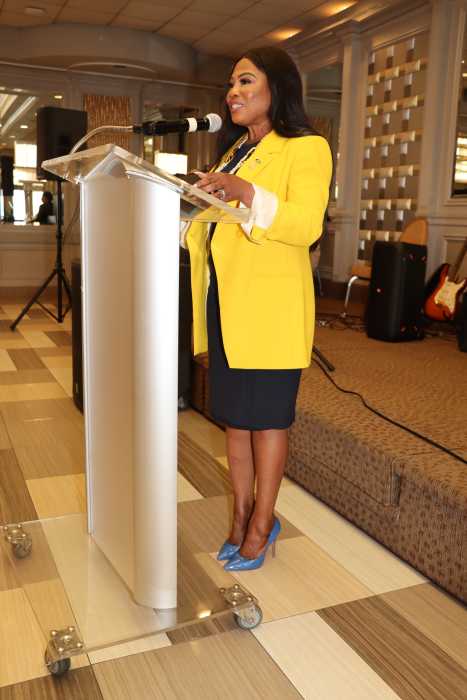Ariane Lopez-Huici's deconstructs, humanizing myths of femininity.
By: JOE FYFE
ARIANE LOPEZ-HUICI
“Photography”
New York Studio School
8 W. Eighth St.
Daily, 10 a.m.-6 p.m.
Through Feb. 2
212-673-6466
The majority of the black and white photographs in Ariane Lopez-Huici's exhibition at the New York Studio School are a group of four unclothed, uncommonly large women. Perhaps more accurately, they are uncommonly large women compared to most photographs of unclothed women. They are not uncommon among women in the world. As Lopez-Huici photographs them, they are proud, comfortable, and the picture of health. Their substantial forms seem to open and feed on the light of the photography studio, as they emerge from the surrounding darkness.
It took several years for the photographer to establish a rapport with her models, but the trust that developed allowed even for humor in some of the pictures. One, titled “Triumph,” has the four women joining hands with their arms raised in apotheosis as their bulky upper arms, breasts, stomachs, and thighs fold over each other and collect in the frame like luminous sculpture.
As a group, the pictures also summon up more ancient associations. They offer a counterclaim to other allusions in contemporary art to the Venus of Willendorf (Austria, 30,000 B.C.E.). This tiny statue, with its mute pendant head and protruding belly, breasts and thighs, is thought to be a fertility deity.
The sculpture plays a significant role in the brilliant opening chapter of Camille Paglia's (perhaps deservedly maligned) book, “Sexual Personae,” in which she describes this figurine as containing women's essential power — that of the dark, primitive mysterious forces of procreation and destruction, of instinct and blood, rooted in the earth. Paglia writes, “She is the too-muchness of nature… She is remote as she kills and creates. She is the cloud of archaic night.”
Stubby, oversized confederates of the Venus of Willendorf are staples of Jeff Koons' production; she is embodied in the early “Vacuum Cleaners,” in “Rabbit,” and in “Puppy,” among other works. By utilizing this sign, Koons argues that commercial culture furnishes society with primordial energy in order that it may be psychically healed. Helmut Newton, particularly in his “Large Nudes,” and more recently Vanessa Beecroft both attempt to wed the Venus of Willendorf's mysterious silence and forbidding sexual aura to another aspect of commercial culture, the hauteur of the fashion model. The fallacy in the case of all three comes from the artists' re-investment in the myth.
Lopez-Huici acknowledges the symbolic power of the Venus of Willendorf, of the earth mother, and of other myths of femininity even as she de-mystifies them through the specificity and ambient humanity of her subjects. She prefers the primacy of the natural world to the realm of signs. When seen in relation to the photographs of Lopez-Huici, the work of the other artists mentioned here seem rather coy.































